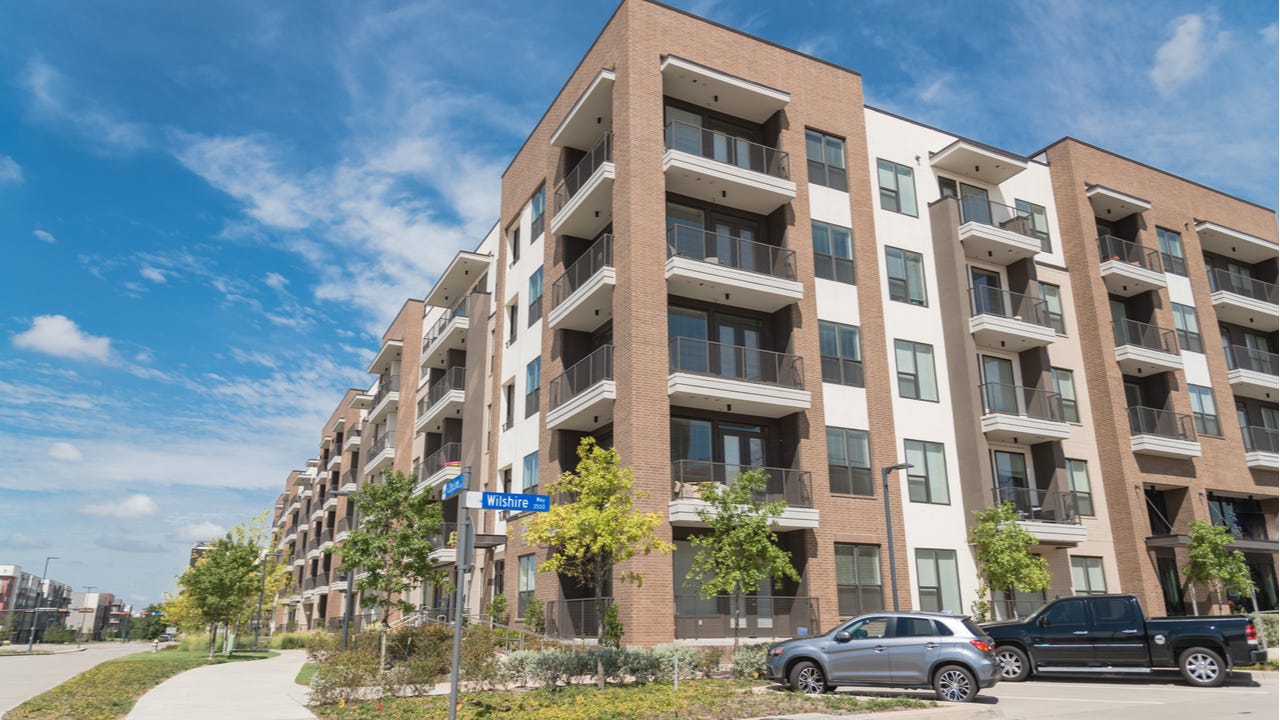How to buy a house with a low income

Key takeaways
- Having a low income doesn’t necessarily mean you can’t buy a home.
- Paying down debt, improving your credit or finding a co-signer are all ways you can improve your chances of qualifying for a mortgage, even with a low income.
- Some types of mortgages are designed for lower- to moderate-income borrowers, including conventional loans that require only a 3 percent down payment.
If you have a stable job but earn less than you’d like, you might be wondering whether you can afford a home. While you do need sufficient income to qualify for a mortgage, your earnings are just one factor mortgage lenders consider. Here’s how to buy a house with a low income.
Can I buy a house with a low income?
Yes, you can buy a house with a low income, provided you can reasonably afford the mortgage, maintenance and other expenses associated with owning a home.
When you apply for a mortgage, the bank or lender evaluates your debt-to-income (DTI) ratio, a key measure of how your income stacks up against your mortgage and other debt payments. If you have very little other debt, apart from the mortgage you’re taking on, you could still qualify.
Keep in mind, however: While a low income doesn’t preclude you from homeownership, it can prevent you from buying a home as expensive as you’d like.
How to buy a house with a low income
Buying a home involves several steps, from budgeting — especially so on a lower income — to getting preapproved, making offers and moving through to closing.
1. Understand your current financial situation. Knowing the facts about your finances — including your current DTI, credit score and savings for a down payment and closing costs —can help you plan for buying a home, as well as your eventual monthly mortgage payment. Our How Much House Can I Afford? calculator can help.
2. Work on your credit score. Your credit score is one of the biggest factors in determining your mortgage rate, so the higher your score, the lower your monthly mortgage payment. Improving your score takes time, so check your reports and score as soon as you know you want to buy. Do your best to pay bills on time and avoid opening new lines of credit. In addition, look for any errors — such as incorrect contact information — on your reports. If you spot any inaccuracies, contact the credit bureau to get them resolved.
3. Pay down debt. Reducing your debt load can boost your credit score and lower your DTI ratio — two items that will improve your chances of getting approved for a mortgage. Not sure where to start? Look into different debt repayment strategies, like the snowball or avalanche methods.
4. Build your savings. When buying a home, two of the biggest upfront costs you’ll face are the down payment and closing costs. If you need help saving for these expenses, try:
- Parking your money in a high-yield savings account, money market account or Certificate of Deposit (CD)
- Setting up automatic savings transfers from your checking account into a savings account
- Finding a side hustle or second job
- Asking for a raise at work
5. Consider a co-signer. If you have a friend or family member who’s willing to co-sign your mortgage, it may be easier to qualify for a loan. However, this is a big commitment — and if you stop making payments, they’ll be responsible for repaying the loan.
6. Connect early with a loan officer. Even if you’re not ready to buy a home yet, get in touch with a few loan officers. They can help you understand the lender’s credit score, DTI ratio and other requirements, as well as fees. They could also prequalify you so you’ll know how much you can get approved to borrow.
7. Shop for a lender and get preapproved. Once you’re ready to start looking at homes, compare mortgage offers and rates from at least three mortgage lenders. Then get preapproved for a loan. Sellers will take your offer more seriously if you’re preapproved.
8. Find a home and apply for a mortgage. Once a seller accepts your offer, submit the purchase agreement to your lender. Your loan will then move through the underwriting process, which includes an appraisal and verification of your employment and income. This can take time, and your lender might require you to send additional documents.
9. Close. Once your loan is cleared to close, you’ll prepare to pay closing costs and move to your new home.
What’s the minimum income required to buy a house?
There isn’t a minimum income requirement to buy a home, but your lender will want to make sure you can afford a monthly mortgage payment in addition to your other debt.
That said, Bankrate’s 2025 Housing Affordability Study found that buyers need an annual household income of almost $116,986 to afford the typical home in today’s market. Of course, this varies by location. For example, buyers in Washington, D.C., need a minimum income of $240,009, while hopeful homeowners in West Virginia should have an income of at least $64,179.
Lower-income mortgage programs
There are several mortgage programs tailored to lower- and moderate-income borrowers. Here are the options and requirements.
HomeReady mortgage
Fannie Mae’s HomeReady mortgage program allows buyers to put down as little as 3 percent of the home’s price, and you don’t need to contribute any money personally. The funds can come from grants and gifts, for example.
While you can put down as little as 3 percent, you’ll need to pay for private mortgage insurance (PMI) until you attain 20 percent equity. You’ll pay the mortgage insurance with your monthly mortgage payment, which will add to that cost. And you’ll need to take a homebuyer education course.
HomeReady has a few other pros for low-income borrowers. Your mortgage lender can consider your rent payment history to help qualify you for the loan, says Roselina D’Annucci, a New York–based real estate attorney with the Law Offices of Serrano and Associates, P.C.
You can also add a co-borrower, even if that person isn’t planning on living in the home. “For example, parents who won’t be living in the home can be co-borrowers on the loan to help their children qualify for a mortgage,” D’Annucci says.
Home Possible and HomeOne mortgages
Like a HomeReady mortgage, Freddie Mac’s Home Possible and HomeOne mortgages require just 3 percent down. The down payment funds can come from many sources, including family members, employer-assistance programs and even sweat equity.
Unlike HomeReady and Home Possible, a HomeOne mortgage doesn’t have income or geographic requirements, but you will need to pay for mortgage insurance if you put down less than 20 percent.
“There are a few other strings attached, too: If you are a first-time buyer, you will be required to go through a homeownership education program,” says Tabitha Mazzara, director of Operations at Mortgage Bank of California.
FHA loan
You can get an FHA loan, which is insured by the Federal Housing Administration, for as little as 3.5 percent down if your credit score is 580 or higher.
“This loan has less stringent requirements that can help low-income borrowers or those with poor credit histories,” says Gerwin Wallace, a mortgage loan originator with Silverton Mortgage in Anniston, Alabama. “You may pay lower closing costs with this loan, as well.”
If your down payment is less than 10 percent, however, you’ll pay mortgage insurance for the life of the loan. The home you want to buy must also pass an appraisal to ensure it meets FHA safety guidelines.
VA loan
VA loans are available to eligible active-duty service members, veterans and surviving spouses. With this type of loan, you typically don’t have to put any money down, and you won’t have to pay for mortgage insurance. You might also pay lower closing costs and a lower interest rate than you would with other financing options.
In addition, the VA loan is a lifetime benefit; that means if you’re eligible, you can get a VA loan multiple times.
However, you’ll need to pay a funding fee, the amount of which depends on the type of loan you’re getting, whether you’ve gotten a VA loan before and if you’re making a down payment.
To qualify for a VA loan, “you must have good credit, a steady income and a Certificate of Eligibility from the VA,” Mazzara says. “Also, your loan amount must not exceed the appraised value of the house.”
USDA loan
Similar to a VA loan, a USDA loan doesn’t require a down payment, but the home must be located in an eligible rural area — although many suburban areas are also eligible for USDA financing, according to Wallace.
Instead of mortgage insurance, you’ll need to pay an upfront guarantee fee and annual fees.
Good Neighbor Next Door program
Good Neighbor Next Door is a homebuying program available to law enforcement officers, teachers, firefighters and emergency medical technicians. The program, administered by the U.S. Department of Housing and Urban Development (HUD), allows borrowers to buy a home for 50 percent off list price in exchange for living in the property for at least three years.
However, the home has to be a property in a HUD-determined “revitalization area,” the public service professional must typically work in that area, and the home must be listed for sale through the program. Listings are available only for seven days. You’ll also need to get a second mortgage to qualify for the discount — but you won’t be on the hook for the second mortgage or any interest on it so long as you fulfill the three-year residency requirement.
HFA loan
Not to be confused with an FHA loan, an HFA loan is another type of low-income mortgage, offered through Fannie Mae (called “HFA Preferred”) and Freddie Mac (called “HFA Advantage”), that requires only 3 percent down. HFA loans are available through partnerships between state housing finance agencies (HFAs) and mortgage lenders. In many cases, you don’t have to be a first-time buyer to qualify, and you might get down payment assistance, as well.
State and local down payment assistance programs
There are a variety of local down payment assistance (DPA) programs, typically geared toward lower- to moderate-income borrowers. These programs usually come in the form of a grant or loan, the latter of which might require repayment or could be forgiven after a certain amount of time.
Mortgage credit certificate
A mortgage credit certificate (MCC) is a federal tax credit that can help low- and moderate-income or first-time buyers offset some of their mortgage interest payments. Unlike a tax deduction, MCCs offer a dollar-for-dollar tax credit of up to $2,000 annually. An MCC isn’t free, however, so if you qualify, ask a tax professional if this is the right move for you. Often, the savings over a 30-year mortgage exceed the upfront fee.
Manufactured and mobile home loans
If you’re interested in a manufactured or mobile home, you might qualify for special financing specifically for lower-income buyers.
“For example, MH Advantage is a Fannie Mae loan program designed to finance manufactured homes,” Wallace says. “It features low down payment options, low monthly payments and reduced interest rates compared to most standard loans for manufactured homes. Also, it offers the ability to combine HomeReady, HFA Preferred and other mortgage programs without being tied to any one specific program.”
Why we ask for feedback Your feedback helps us improve our content and services. It takes less than a minute to complete.
Your responses are anonymous and will only be used for improving our website.
You may also like

How to sell a house by owner in Maryland








